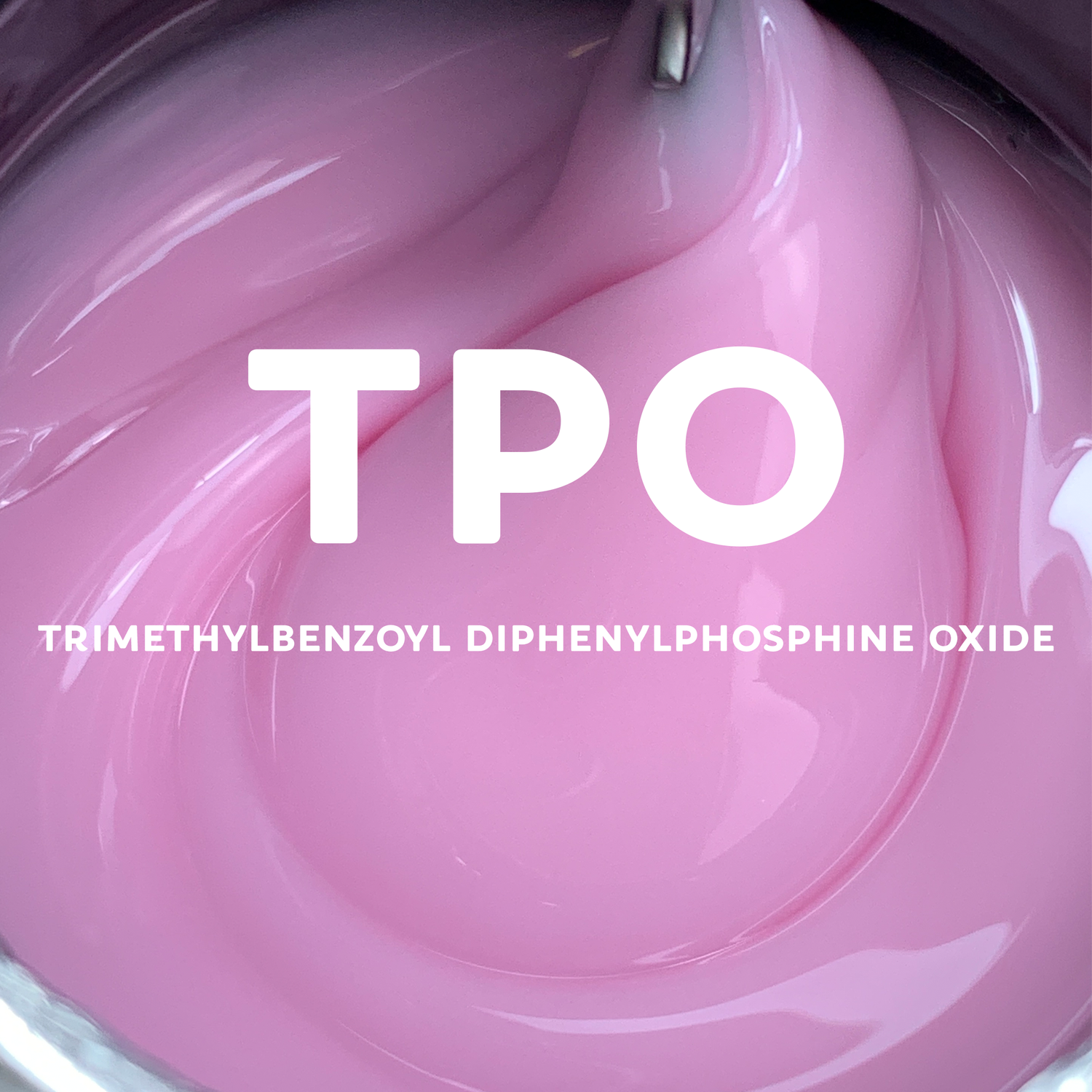Understanding the TPO Ban

We understand that many of you may have seen recent brand statements and discussions about the "banning" of TPO (Trimethylbenzoyl Diphenylphosphine Oxide) and might be feeling concerned. As always, at Gellifique, we want to ensure that our customers fully understand regulatory changes and how they affect you as a consumer, so let’s talk about it.
First and foremost, manufacturers are made aware of upcoming regulatory changes well in advance, giving us time to prepare and reformulate products where necessary. TPO is a highly efficient photoinitiator, but each gel polish formula is unique, tailored for specific performance characteristics. Fortunately, many of our older products launched between 2015 and 2020 already used an alternative photoinitiator—Hydroxycyclohexyl Phenyl Ketone—which is integrated into the polymer network of Acrylates Copolymer due to its specific role in the product’s synthesis.
More recently, many of our newly launched products contain alternative photoinitiators such as Methyl Benzoylformate and Ethyl Trimethylbenzoyl Phenylphosphinate. These alternatives are not only highly efficient but also fully compliant with the latest regulatory guidelines, ensuring product safety and high performance. However, trace amounts of substances—measured in parts per million (ppm) rather than percentages can still be present in some formulations. Thus, we are conducting thorough reviews of all products to ensure full compliance well before the enforcement date of September 1 2025.
What Are Annex II and III?
The EU Cosmetics Regulation includes several Annexes that define which substances can and cannot be used in cosmetic products sold within the EU.
- Annex II: Lists substances that are completely banned in cosmetics because they pose a significant risk to human health.
- Annex III: Lists substances that can be used in cosmetics, but only under strict conditions. These conditions may include limits on concentration, specific product types, or mandatory safety warnings.
In addition to these, there are other sections that regulate specific cosmetic ingredients:
- Annex IV: Lists allowed colorants in cosmetics.
- Annex V: Lists allowed preservatives.
- Annex VI: Lists allowed UV filters.
Why Do Ingredients Become Restricted or Banned?
Many chemical ingredients are initially restricted and may later become banned, or the reverse. This is a natural process driven by three major factors:
-
Consumer Pressure and Public Perception: As consumers become more aware of ingredient safety (e.g., concerns about parabens or phthalates), regulators may respond by imposing restrictions or bans to address these concerns.
-
New Scientific Research: Ongoing research may uncover new health risks associated with certain ingredients. A substance once considered safe in small amounts could later be shown to have long-term harmful effects, prompting regulators to take action.
-
Evolving Safety Standards: As safety standards become more stringent, ingredients that were previously restricted may no longer meet the requirements. In response, regulators may phase out these ingredients in favor of safer alternatives as the industry advances.
Retail vs. Consumer Use
Unfortunately, some brands use fear-based marketing tactics to create anxiety and push their products. In reality, most changes in Cosmetic Regulations have minimal impact on consumers directly. While regulations may affect the way a brand operates, they don’t necessarily affect your use of products in the same way.
-
Retail: The regulation prohibits retailers from selling products containing TPO (Trimethylbenzoyl Diphenylphosphine Oxide) within the EU. This means UV/LED gel nail products with TPO can no longer be sold by retailers in the EU.
-
Consumer Use: If you already own a product containing TPO, there’s no regulation preventing you from continuing to use it. However, retailers can no longer offer new products with TPO for sale.
- Not all markets are affected: It’s important to understand that the EU Cosmetic Regulations apply only to countries within the European Union. This means that regulatory changes, such as the restriction or ban of certain ingredients, may not apply to countries like the USA, Canada, Australia, and other non-EU markets. Just because an ingredient is restricted or banned in the EU doesn't mean brands using it elsewhere are bad or irresponsible.
As we recently highlighted on our social media, chemicals are a part of our daily lives. Some serve essential purposes, while others may be unnecessary or regulated for safety reasons. However, no chemical is inherently "evil"—the key lies in understanding how and where they are used, and what safety measures are in place to protect consumers.
Important Reminder
Please remember not to use products beyond their PAO (Period After Opening) date! We've noticed that some customers continue using products long after their first purchase—sometimes even 5 years later. For the best results, avoid this and take advantage of our bulk offers to keep your stock fresh and enjoy the benefits of working with "fresh" gels.